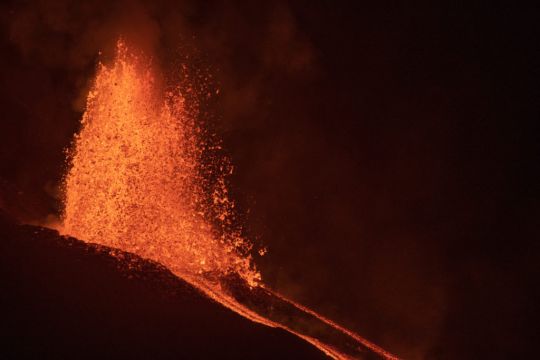Lava flowing from an erupting volcano on La Palma in Spain’s Canary Islands has picked up pace on its way to the sea and is now within about 2,600ft (800 metres) of the shoreline, officials said.
While one of the two rivers of lava on the island has slowed down, the other is hotter and more fluid and is bearing down on the small town of Todoque, forcing evacuations, the Canary Islands emergency volcano response department said.
Officials have been expecting the lava to reach the Atlantic Ocean, but the eruption has been erratic.

After calming down on Monday, the volcano became more explosive again overnight.
When the molten rock eventually meets the sea water it could trigger explosions and the release of toxic gas, though authorities say they do not expect the slow-moving lava to create large disruption on the coast.
La Palma, home to about 85,000 people, is part of the volcanic Canary Islands, an archipelago off north-west Africa. The island is roughly 22 miles long and 12 miles wide at its broadest point.

Lava from the eruption, which began on September 19, has destroyed 589 buildings and 13 miles of roads on La Palma.
The lava now covers 258 hectares (637 acres), mostly farmland, according to a European Union satellite monitoring agency.

No fatalities or serious injuries have been reported since the volcano’s eruption, thanks to prompt evacuations.
The volcano has so far spewed out more than 46 million cubic metres (1.6 billion cubic feet) of molten rock, according to the Canary Island Volcanology Institute.
The Spanish government has announced it is providing an immediate grant of 10.5 million euro (£9 million) to buy 107 properties to rehouse local people and also provide them with income aid.
Government spokeswoman Isabel Rodriguez said more aid, including for the rebuilding of public infrastructure, will be sent once the current emergency is over.







